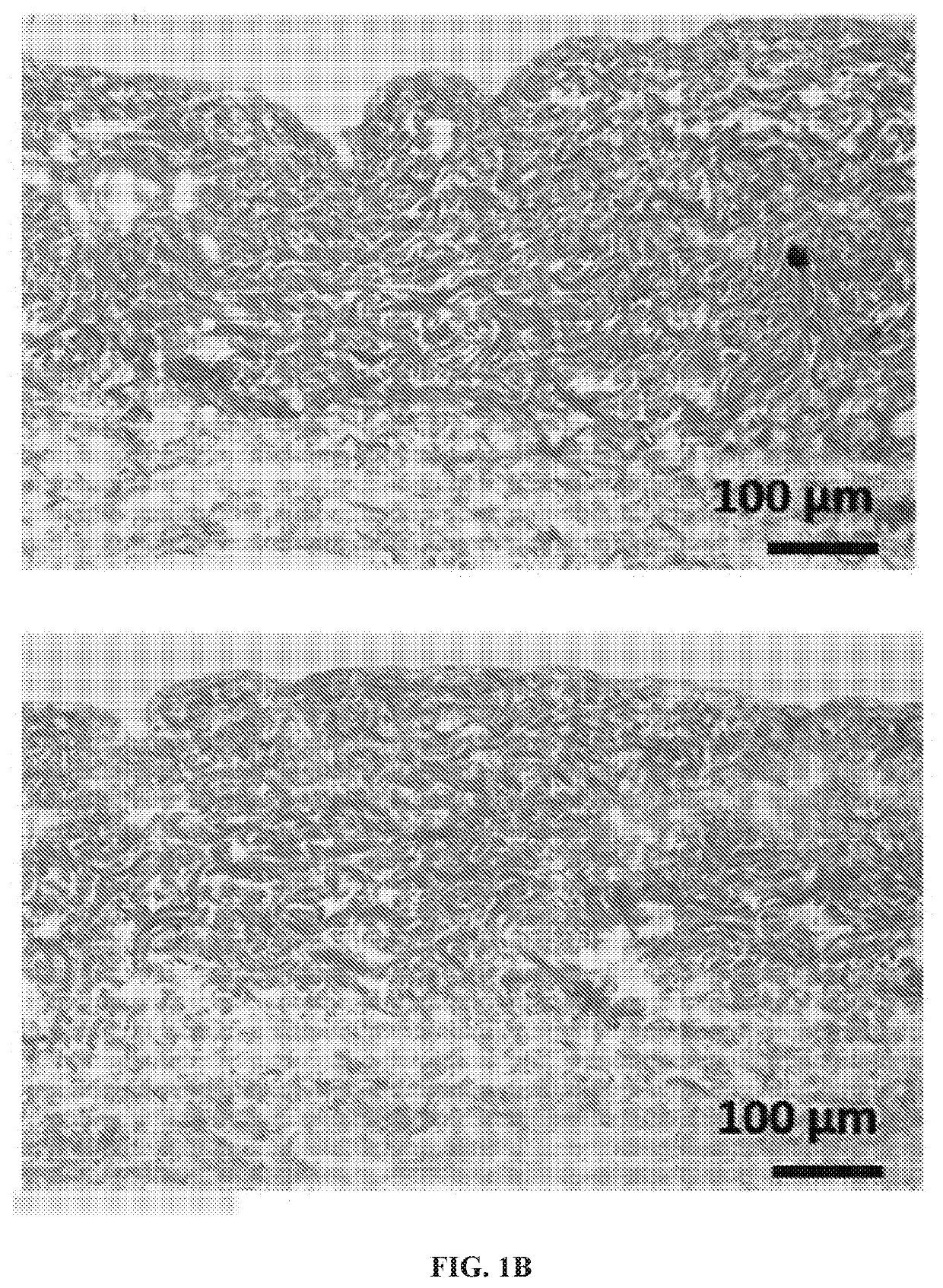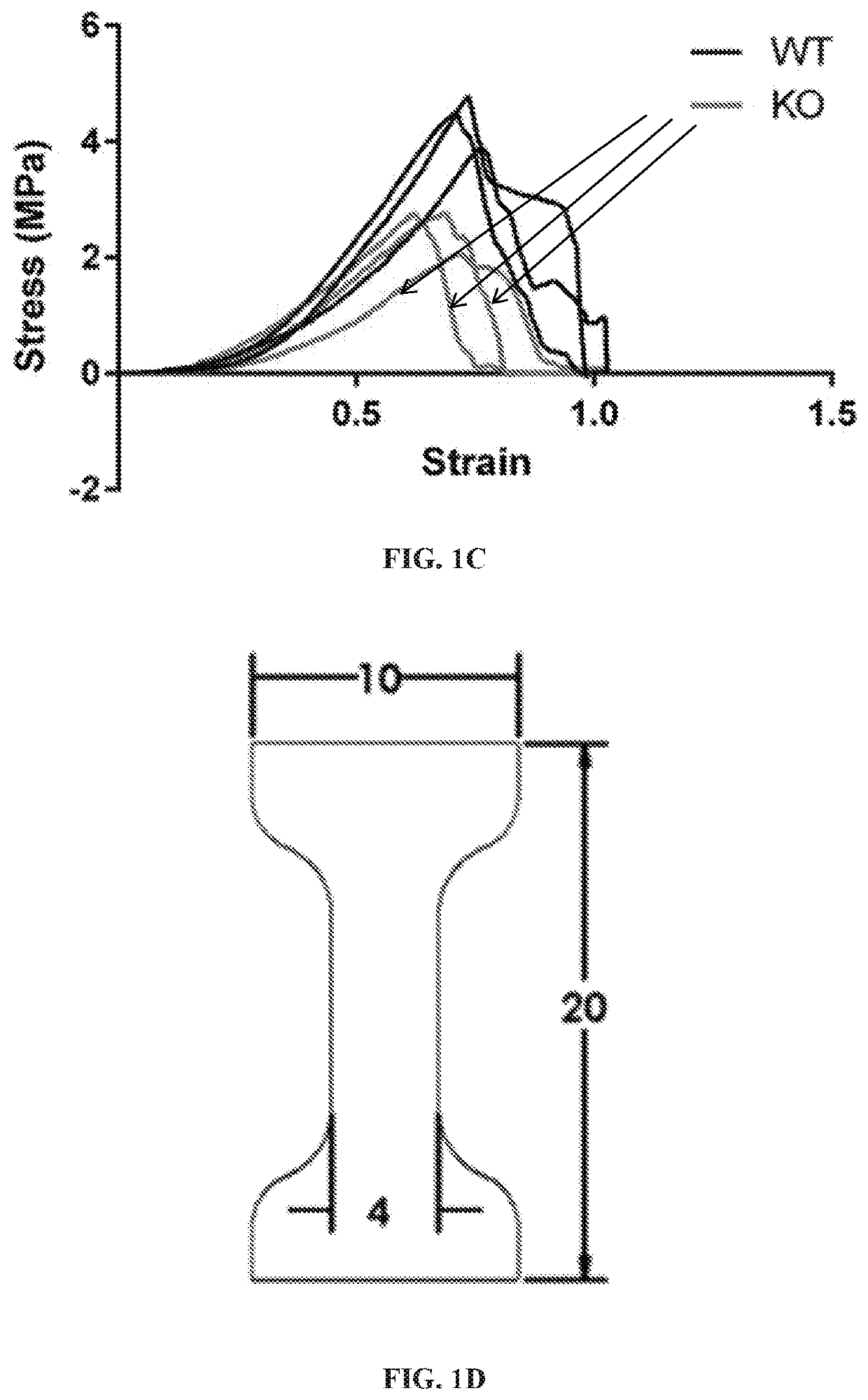Compositions and methods useful in regenerative medicine
- Summary
- Abstract
- Description
- Claims
- Application Information
AI Technical Summary
Benefits of technology
Problems solved by technology
Method used
Image
Examples
experimental examples
[0145]The invention is further described in detail by reference to the following experimental examples. These examples are provided for purposes of illustration only, and are not intended to be limiting unless otherwise specified. Thus, the invention should in no way be construed as being limited to the following examples, but rather, should be construed to encompass any and all variations which become evident as a result of the teaching provided herein.
[0146]Without further description, it is believed that one of ordinary skill in the art can, using the preceding description and the following illustrative examples, make and utilize the compounds of the present invention and practice the claimed methods. The following working examples therefore, specifically point out the preferred embodiments of the present invention, and are not to be construed as limiting in any way the remainder of the disclosure.
Materials and Methods for Examples 1-6
Isolation and Decellularization of Murine Ski...
example 1
anipulation Alters Scaffold Structure and Mechanical Properties
[0163]The decellularization process previously optimized for WT mouse skin was able to adequately decellularize TSP-2 KO skin as well (Morris, et al., BioRe-search Open Access, 5(1): 177-187, 2016). Decellularization resulted in removal of bulk cellular and nuclear material, which was clearly demonstrated by the lack of nuclear remnants on the hematoxylin and eosin (H&E) stained tissue (FIG. 1B). SEM demonstrated the basket-weave morphology of the dermis of the WT construct, contrasting with the less-organized morphology of the TSP-2 KO construct (FIG. 1A). Mechanical testing demonstrated a right shifted stress-strain curve with lower peaks at failure corresponding to reduced elastic modulus and ultimate tensile strength (U.T.S.) respectively (FIGS. 1C-1F).
example 2
on, Denaturation Quantification, and Degradation Kinetics
[0164]Collagen content was reduced in the TSP-2 KO construct as compared to WT (FIG. 2A), but sGAG and residual DNA content did not change with genotype (FIGS. 2B-2C). The similar residual DNA content was below the commonly accepted threshold of 50 ng dsDNA per mg ECM, and indicates that the tissues are equally well decellularized. Denatured collagen was quantified with a collagen hybridizing peptide using a previously published method (Hwang, et al., Acta Bionaterialia, 53:268-278, 2017). No difference was found in the total amount of denatured collagen between native skin, WT construct, or KO construct, but the heat denatured control demonstrated significantly more denaturation (FIG. 2D, FIG. 2G) Digestion of decellularized constructs in purified enzyme solution indicated that WT and TSP-2 KO acellular dermal matrix (ADM) have equal susceptibility to both collagenase and pepsin (FIGS. 2E-2F). In vivo degradation is cell medi...
PUM
| Property | Measurement | Unit |
|---|---|---|
| Length | aaaaa | aaaaa |
| Concentration | aaaaa | aaaaa |
| Biological properties | aaaaa | aaaaa |
Abstract
Description
Claims
Application Information
 Login to View More
Login to View More - R&D
- Intellectual Property
- Life Sciences
- Materials
- Tech Scout
- Unparalleled Data Quality
- Higher Quality Content
- 60% Fewer Hallucinations
Browse by: Latest US Patents, China's latest patents, Technical Efficacy Thesaurus, Application Domain, Technology Topic, Popular Technical Reports.
© 2025 PatSnap. All rights reserved.Legal|Privacy policy|Modern Slavery Act Transparency Statement|Sitemap|About US| Contact US: help@patsnap.com



